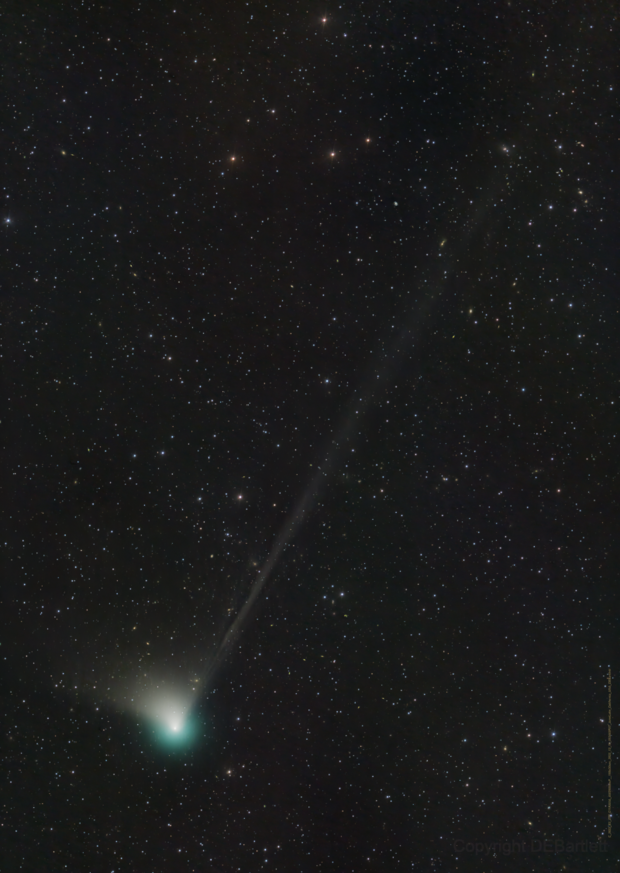4.01.2023

The new year has just begun, but the cosmos are already set to make history in 2023. A comet discovered less than a year ago has traveled billions of miles from its believed origins at the edge of our solar system and will be visible in just a few weeks during what will likely be its only recorded appearance.
The comet, C/2022 E3 (ZTF), was first seen in March 2022 as it made its way through Jupiter's orbit. According to NASA, it's a long-period comet believed to come from the Oort Cloud, the most distant region of Earth's solar system that's "like a big, thick-walled bubble made of icy pieces of space debris" that can get even bigger than mountains. The inner edge of this region is thought to be between 2,000 and 5,000 astronomical units (AUs) from the sun — between 186 billion and 465 billion miles.
This means that C/2022 E3 (ZTF) has made a rare, once-in-a-lifetime journey to be close to Earth.
"Most known long-period comets have been seen only once in recorded history because their orbital periods are so, well, long," NASA says. "Countless more unknown long-period comets have never been seen by human eyes. Some have orbits so long that the last time they passed through the inner solar system, our species did not yet exist."
One recent comet of this type, C/2013 A1 Siding Spring, previously visited the inner solar system and went near Mars in 2014, but according to the space agency, it won't return for about 740,000 years.
Jessica Lee, an astronomer with the Royal Observatory Greenwich, told Newsweek that the E3 comet could be a similar situation.
"We don't have an estimate for the furthest it will get from the Earth yet — estimates vary — but if it does return it won't be for at least 50,000 years," she said. "...Some predictions suggest that the orbit of this comet is so eccentric it's no longer in an orbit-so it's not going to return at all and will just keep going."
Now, the recently discovered E3 comet, which has been seen with a bright greenish coma and "short broad" dust tail, is set to make its closest approach to the sunon January 12. It will make its closest approach to Earth on February 2.
Astrophotographer Dan Bartlett managed to capture an image of the comet in December from his backyard in California. He was able to see "intricate tail structure" in the comet's plasma tail, he said, and "conditions are improving."
If all goes well and the comet continues on its current trend in brightness, NASA said that it will be easily spotted with the help of binoculars. It's also possible that it will be visible to the naked eye away from city lights. Those in the northern hemisphere will be able to see the comet in the morning during January, while those in the southern hemisphere will be able to see it in early February, NASA said.
Quelle: CBS News
